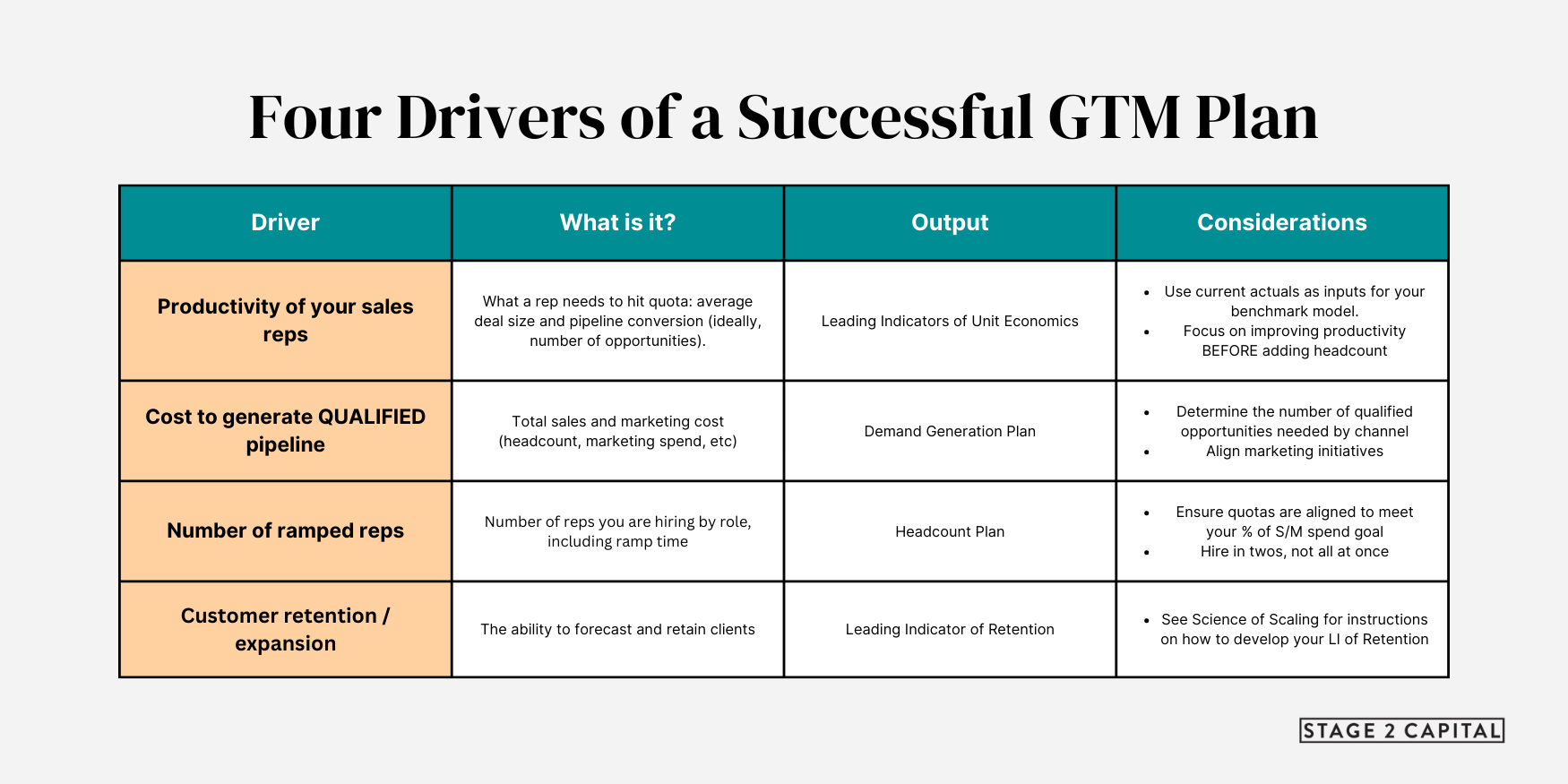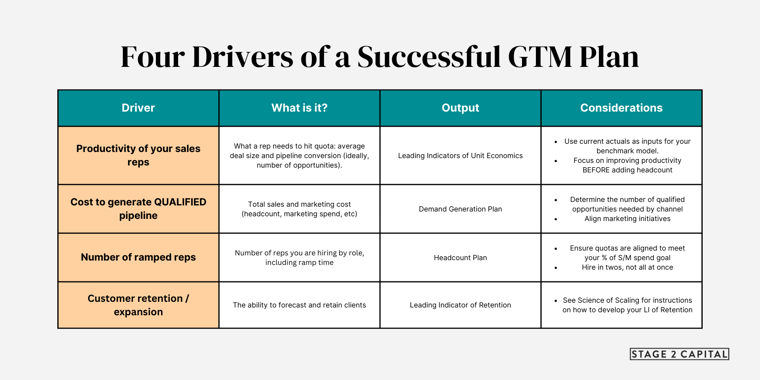Like many of you, I learned the difference between having a revenue plan and executing on the plan while I was on the job.
At a previous high-growth startup where I ran an international sales team, our annual revenue plan was based on the consumer funnel because we were a marketplace. However, it wasn’t tied to my team’s ability to generate the supply side of the business. The only way to make sure we could deliver was to build a Bottoms Up Model. And the first time we did this, we realized we were a few million dollars off…yikes!
Since it’s the time of year when companies are finalizing annual revenue plans and rolling out quotas, comp changes and KPIs, I am sharing the four drivers you need to monitor to hit your plan this year AND a template you can use to summarize / get buy-in from your executive team.
Using a Bottoms Up Model Dramatically Increases Your Likelihood to Hit the Annual Plan
A successful GTM plan starts with building a GTM Bottoms Up Model that matches the finance plan to ensure that you have the capacity to hit your revenue goals. The outcome of that model boils down to four drivers that will make or break your success:

Before I go into more detail about each driver, I want to emphasize that they all need to be realistic based on what your team is currently doing, not what you aspire to do.
For example, if your team historically grew by 3 new reps per quarter, adding 4 or 5 new reps per quarter seems reasonable — but, adding 15 does not.
Or, if you generated an average of a 10% month-over-month lift in MQLs, no more than doubling that pace of growth might make sense.
I can’t tell you how many plans I see where the reps are responsible for doing 5 deals a month, but they are actually doing 3 deals a month, and the executive team is “hoping” they will improve to 5. As my first VP of Sales rightfully said, hope is not a strategy. Keep it realistic and then change it as your team improves.
- Productivity of your reps: In this economic environment, productivity is super important because it improves your CAC payback and efficiency (which us VCs love). The four things that impact this are:
- # of opportunities needed per rep to hit quota (ideally broken down to weekly)
- Average deal size
- Close rate
- Sales cycle
- Cost to generate QUALIFIED pipeline: Now that you know how many opportunities you need to deliver a month, determine how you will get them. What demand generation channels will you use and how many opportunities will each one produce? Equally important is the cost of generating the opportunities because it aligns to your CAC payback. Overall, Sales and Marketing costs should not be more than 35-40% of revenue.
- Number of ramped reps: Although this is self-explanatory, here are a few tips:
- If you plan on hiring, make sure you start recruiting 3-4 months prior to the start date so you have time to get that person on board.
- Don’t forget to add in ramp time so you aren’t over projecting your revenue. Most reps take 3-6 months to ramp to full quota.
- We recommend adding reps 2 at a time so you have time to ramp them and ensure that you can generate the pipeline they need.
- Ability to retain and expand customers: Retaining and expanding your customer base is just as important as adding new customers, so you want to put a data driven metric in place to review the health monthly. That’s where the Leading Indicator of Retention comes in. It’s a user action you can measure monthly that should indicate if a customer is at risk so you can proactively manage them.
The “Summary” tab in our Bottoms Up Model summarizes the first three drivers which you can automate with your CRM. Most companies create the Leading Indicator of Retention as an excel waterfall they can update monthly.
I found that using a GTM Plan PPT template to share the plan and key drivers with the organization — from the executive team to revenue leadership — helps everyone get aligned on the key drivers to execute. This is what my previous sales orgs did to ensure that we had a GTM plan that was going to hit the revenue number and get the entire organization aligned on the key drivers. Track these four drivers on a monthly basis (and the productivity on a weekly basis) and you’ll have the inside track to beating your annual plan.

